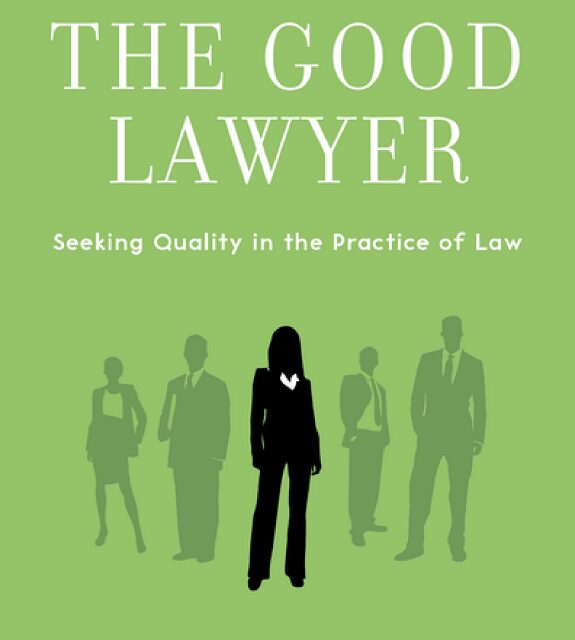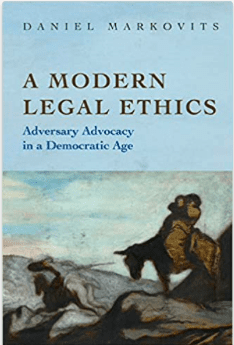Douglas O. Linder and Nancy Levit. THE GOOD LAWYER: Seeking Quality in the Practice of Law. Oxford University Press, 2014, with an enormous bibliography to be found in the footnotes. My exposition, commentary and critique will be presented in several parts. This one is on background and foundations.
Part VII
Parts I and Part V should be read first. It pertained to foundations, topics, most important sources. Other parts with concern other specific matters and they will be organized by questions about, commentaries on, and therefore arguments with different chapters. Part II, already published, is about Chapter One of the book, and that chapter was about the good lawyer, empathy and the good lawyers’ being empathetic and being a good lawyer.
On Being Persuasive Being persuasive is, according to the authors, at least by suggestion, is a necessary condition of being a good
lawyer. It is not just a high correlation; it is a must. (They don’t say this explicitly, but it’s clearly implied.) This proposition
sounds like a cliche, but it really it isn’t. This is because the authors assert that lawyers must be (and hence trained to be) persuasive in all sorts of situations lawyers face and deal with, not just in formal arguments before courts of appeals, as well as bodies like those, even though persuading at those those has been the paradigm of what law students are trained to do in law
school.
An Image of a Good Lawyer
Presentation–Male Version: Podiums, shined shoes, dark suits, neckties which are restrained, combed hair, shaved faces or well cut beards, and so forth. An Analogous Female Version. . . . And for both: clear legal arguments, use of the deductive method of reasoning to the extent possible, explicit connections to rules—whether statutory, administrative or court precedent, with summaries of fact lilting around the rules and principles emphasized. In other words, facts revolve around rules. (The symbolism here is of my device, and I am attributing to the authors.) Rules are the “anchor,” and rules provide a “frame.” Legal reasoning is always legal argument. Legal argument should be rigorous.
Judges love syllogism and so does everyone else, really, even if they don’t know it.
—MSQ
This approach to persuasion is unsound, say the authors. Instead, there must be a mix. There must also be a focus on the intuitions of the listeners, a central use of persuasive stories, and the inclusion of all rhetorical products of the various types of thinking emphasized in the chapter of the book on thinking and reasoning. The good lawyer will remember, however that calling forth the intuition—what they call “moralintuition”—is the key to all sound presentations. (I think what the authors mean by “moral
intuitions” is deep and virtually immediate perceived grasp of what is right. In human actions, the moral intuitions of the populace are likely to be similar in better than “29 out of 30 cases.” At the same time, intuitions are made manifest by images, story and
direct appeal, not by abstract argument.
This is a beautiful chapter, and its underlying intuition is that their vision is a path to the humanization of lawyers when conceived as mechanical dolls, even creative ones. And they are indeed correct that the great trial lawyer have this rhetorical outlook built into their very souls. (Notice I said, “great” trial lawyers, not simply “good lawyers.” Remember how the authors distinguish these two categories. Obviously I have departed from their view.)
For all of my good feelings toward it, however, I see this chapter beset by real problems:
- It is not true that all good lawyers are persuasive. There is always a back office nerd who may be brilliant, visionary, and infallibly intuitive about who will accept what, but who also stammers. His writing may be more like that of Aristotle or Aquinas than like the gifted persuasive-prose lawyer. Most lawyers do not master both rhetorical forms, though many think they do, and this point applies to good lawyers as well as mediocre ones.
- What will be persuasive depends on the audience. Appellate judges are often not taken with story-telling. They often want, or think they want, deductive-like argumentation based on the concept, precedent and sometimes subtle distinctions. Some appellate judges emphasize the importance of opening up judicial intuition in some ways and at some times. Many appellate judges regard storytelling by lawyers arguing cases before them with a degree of contempt.
- Storytelling, appeals to ordinary intuition and vivid imagery in a sophisticated business negotiation session may be appropriate in a subordinate way. For example, if the use is to bring similar examples or history into the discussion, but their use will be subordinate to deliberative presentations and hypotheticals.
- Similarly–and returning to the home turf of the authors, trials—not all trials are fit places for vivid appeals to moral intuitions. Litigation that hinges upon the meanings of key terms in sophisticated contracts is much more likely to be determined by “intellectually deliberative” methods than they will be on intuition, by inviting the morally intuitions, storytelling, and so forth. The rational persuader, as opposed to the intuitive persuader is in much better shape in complex business cases than is the wonderful personal injury or criminal defense lawyer. Moreover, such cases are not anything like dramatic civil rights cases, the famous Scopes case (which Darrow lost in the trial court, by the way*), current abortion availability cases (whether tried to judge or jury, whether tried in Manhattan, or L.A. or East Texas**), or the dramatic, high-profile hacking and other cyber-crime cases that are sure to come. (Even story-telling, the big hack-o-rama cases will be tricky. There’s a high-tech dimension; it will have to be explained; there may be millions of something like victims; the first layer of victims are going to be the business that got hit, e.g., Target; one of its problems is the question “What should that humongous retainer have done to prevent the attack and penetration?”; the next layer is going to be insurance companies; and so forth maybe through a lot of lawyers. Then there are going to be all sorts of stories about the invading band of cyber marauders, and there will be the stories about those who designed and/or installed the security walls. (MSQ Question: Can there be sound litigation strategy resting principally on storytelling, where there are many, many stories to be told, nearly all at once?)
- In my opinion; one of the most important elements of being persuasive, aside from showing up reasonably prepared, is to avoid being boring. This is not always easy to do.
- Consider a divorce case, in which one spouse it trying to increase her (or his) take given based upon the outrageous sexual conduct of the other one. (The avoidance of being boring avoidance relatively easy in these situations: people love spice.)
- What abut a case where the central issues are the hiding of vast fortunes overseas. It starts getting harder in this situation: thievery and embezzlement always brings a little spice but lots of boring discussions occur regarding what is actually found in the bank slips, and discussions of even more boring discovery us unavoidable. People are much more interested in the identity of the hotel in which she slept with her, or he with him.)
- Or a case that principally involves evaluating and dividing up 1000s of acres of ranch property in west Texas, New Mexico, and Oklahoma, but where oil royalties are not involved and the children are all both loyal and cordial to each other, as well as their parents (or even when just royalties are, but there is no slant well drilling, no blow outs, no conflicts about fracking, and no environmental-ruination threats).
What is the point to all this?
Persuasion is a complex concept with all sorts of dimensions. Not every formula (or near formula) will work in all context. In fact, the tried and true intellectual approach works here but not there. Invocations of the vivid works over there but not right here. And so on.
*The Scopes case involved the loss of a very small sum of money, and it was paid by a newspaper. The case was then won in a court of appeals, on a technicality. So, how does intuitive persuasion together with the story telling that goes with it fit together with what is known as legal argument?
**The current case just decided in the the United States District Court for the Western District of Texas, Austin Division, Whole Woman’s Health v. David Lakey, M.D. 1:14-CV-284-LY (August 19, 2014) is worth thinking about in connection with considering how persuasion works in today’s courts. The document is entitled MEMORANDUM OPINION INCORPORATING FINDINGS OF FACT AND CONCLUSIONS OF LAW. It is easily findable on the Net. (Stay tuned for the the appellate review in the Fifth Circuit. Two Stages? One on abatement? One of merits?) (Dr. Lakey is the Commissioner of the Texas Department of State Health Services and is a party in his official capacity only. The recently indicted governor is not a party at all.)





Recent Comments